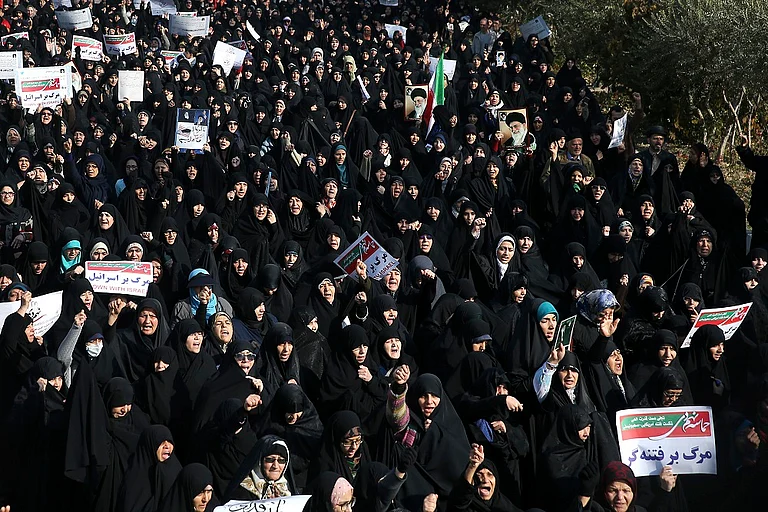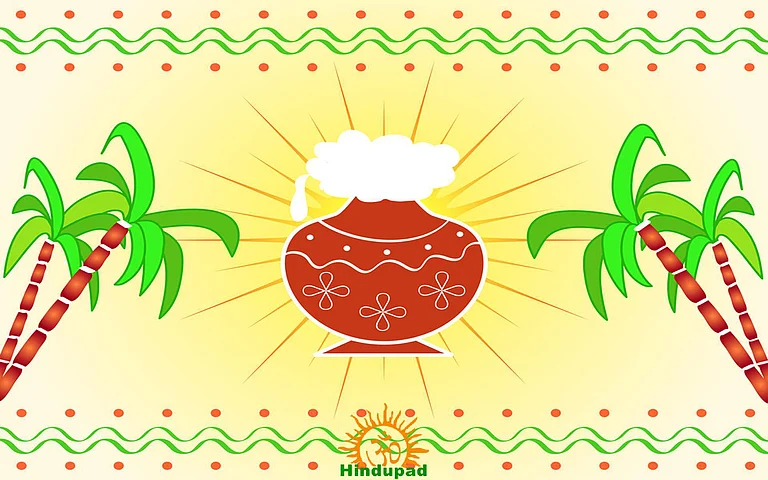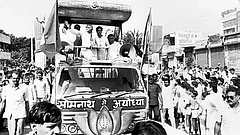Coming from south India, I have always been struck by the idols in temples in north India. They were so unlike the idols in the South. The temples themselves were a different experience: the architecture, the spatial distribution, rituals within the temple, as well as the cultural world surrounding a temple.
The idols were starkly different; most of them were white in contrast to the dark black stone idols in the South. They were smaller in general and their faces seemed to have a different visage. They even had different names in the North—Ram and Krishn instead of Rama and Krishna. Krishna—a male god in the South—was a name for a woman in the North. From South to North, even gender changes in a jiffy.
Temples for Krishna are ubiquitous across India. So also for Hanuman (and Ganesha, at least in the South). Temples for these gods pop up on stray corner streets, and sometimes even in the middle of a broad road. But not so for Rama. There are only a few big, grand temples for Rama in the South unlike many for the gods with other names.
Rama is not just another avatar. There is something fundamentally different about him. I have always seen him as a serious god, a family man, unlike Krishna, Hanuman and Ganesh—three popular gods in the South. Even his idols seemed to express the burden of being a married man.
Rama is a god in the guise of a man. Gods manifest as humans in order to teach us how to act. Gods come ‘down’ to the form of humans because that is the way we learn how to behave and act amongst ourselves. We constantly learn by watching how others act, what others do, and early lessons are learnt from these actions of gods in the many epics and puranas.
Gods in human form exhibit all the frailties of being human. Their lives in this form illustrate the moral dilemmas that all of us face in our daily lives. They lose their sense of power when they are put in human situations and have to act according to the rules of human limitations. So they are born, have birthdays, die, are reborn, fight wars, have problems with their relatives, get married, have children. They inhabit the world of humans in order to show mortals how to deal with the nature of human existence.
They make mistakes and suffer for them like humans do. They feel joy and pain. But what makes these human-form gods is that they accept responsibility for what they do, for their mistakes. They allow humans to hold them accountable. They pay a price for their mistaken deeds and are punished.
My first north Indian encounter with Rama occurred when I visited Bihar. I was in Madhubani visiting a friend and his family. While there, I was introduced to a person who sang wedding songs. She sang a song on Rama. It was critical of him, made fun of him, and blamed him for not taking care of Janaki, his wife. I first thought that it was all in fun until I was told that their anger at Rama was so real that even today girls from that region are not married off into families from Ayodhya.
In This Temple, Rama Is Not The Most Important Deity. He Is Only A Sideshow Because The Real Purpose Is To Promote A Few Who Have Claimed Ownership Of The God.
I must confess I felt a bit sad for Rama. They had made him human, all too human. But this is the unique burden of being Rama. He was not spared even in his own story, the Ramayana. A washerman mocks him and questions his sense of right and wrong when he accepts Sita back. In response, Rama sends her away to the forest. Many women do not seem to have forgiven him for this act even today.
In the South too, there were others who felt betrayed by Rama. In Yakshagana, there is a famous episode where Rama hides and kills Vali. In this powerful performative form, Vali accuses Rama of many things, including cowardice. Rama patiently answers these charges against him even as Vali is on his deathbed. Performed through the night and in open fields in villages, this performance is deeply captivating. Rama sometimes wins the arguments with Vali but that is always besides the point. Even when he wins, he looks like a sad hero.
One of the most important writers in Kannada, Kuvempu, wrote a play called Shudra Tapasvi through which he raises a critique of Brahminical privilege in a story of Rama. The moral dilemmas that Rama had to face now included caste practices and privilege.
So, moral dilemmas are not new for Rama. In fact, that is the reason for his avatar. However, what he faces today is the greatest challenge of his legacy and it is caused by humans who consider themselves gods, who think that they cannot be held accountable by anybody. In using the name of Rama to build a temple for their own personal gain, erecting it on a foundation of violence and hate, they are recreating Rama in their own image. That is not the Rama we know. It is one that goes against his most essential qualities.
In this temple, Rama is not the most important deity. He is only a sideshow because the real purpose is to promote a few who have claimed ownership of the god. They have made Rama into what he is not, turned him into a token figure for taking selfies, made his temple a tourist spot, and are using him for their own personal gains. No other sacred temple of Rama has been built with this end. Rama’s moral dilemmas arose from the actions that he performed as part of his moral universe. But now there is this dilemma that is imposed on him by others who want to exploit him.
True believers take gods into their own selves. By doing so, they are not appropriating them or using them for their ends. Sacredness arises when their relationship with the divine is not based on selfishness. Rama’s temples are sacred to his followers because the temples represent the qualities of their god. But this new temple in Ayodhya stands for everything that goes against the essential qualities of Rama. So every time devotees go to this temple in the name of Rama, are they tacitly supporting these new qualities of Rama that have been imposed on him by a few men? For the sake of a few humans who think they are gods, are these devotees who visit this temple forsaking and betraying the gentle, vulnerable god who came to them in the guise of a human?
(Views expressed are personal)
(This appeared in the print as 'Men In The Guise Of Gods')






























